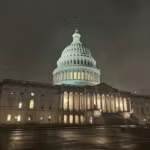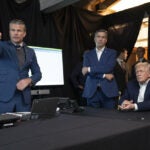
The House’s new bipartisan Future of Defense task force will release a report following its six-month tenure that will likely include recommendations on ways the Pentagon can more effectively innovate for the future and proposed legislation to capture emerging technologies. Reps. Seth Moulton (D-Mass.) and Jim Banks (R-Ind.), co-chairs of the task force, told reporters Tuesday the new group allows lawmakers to broaden beyond the House Armed Services Committee’s near-term focus on the next 12 months to ensure the Pentagon…

 By
By 











